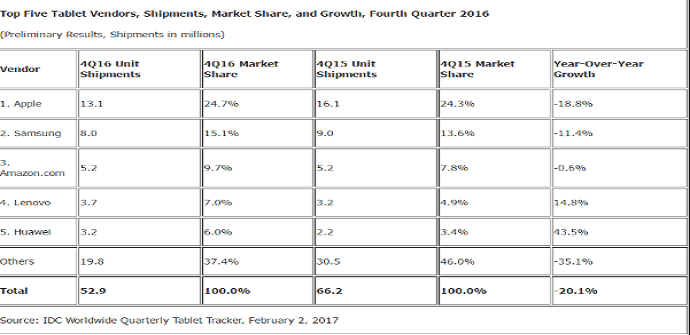
When we talk to you about the direction that tablets and smartphones are following in the market, when it comes to seeing their ascending, descending or flat trajectories, we compare them with those we can see in the real economy, a field in which changes also occur at great speed and in which A decision can have both positive and negative consequences in the short term. We are all witnessing a situation of prolonged stagnation in the case of the first supports that, in broad terms, due to this support throughout the quarters, could resemble the recessions that we have heard so much about in recent years.
But, what has caused the context in which the largest formats are currently found? Next, we will try to see what could have been the possible factors that have determined events, such as the more than two years of falls consecutive sales of tablets and at the same time, we will try to see if this behavior will also have its repercussions in the future. Do you think we have attended a tech boom What has ended up being settled with the figures of units sold that we see now? Was it predictable or could it have been prevented?

Making memory
Perhaps, to better argue the possible explosion of the bubble in the case of the largest media, it is appropriate to do a brief review of the situation in March of this year. As we published a few days ago, during the winter 2017 there had been a further decline in the number of tablets sold, falling for the first time in a calendar quarter of the 40 million of devices. This decrease was also significant due to the fact that with it, there were already 10 consecutive quarters of decreases. In global terms, it was expected that throughout this year, at least 150 million terminals would reach companies and homes, far from the absolute records of 250 million or even more reached during the years 2012 and 2013.
Why could this point be reached?
The appearance of tablets in a massive way took place approximately between the years 2009 and 2010. Despite the fact that at first, the terminals were somewhat unbalanced in performance and possible cost, the truth is that in a few months, prices were lowered , which quickly led to a general expansion of these formats, especially in domestic settings. A handful of brands held the bulk of the market share, which caused a very favorable situation due to two factors: On the one hand, that oligopoly, on the other, the possibility that these companies exploited a market niche formed by hundreds of millions of consumers all over the world, which left them a wide profit margin.

The bubble
As with brick in our country from the late 90s to 2007, consumer electronics provided an environment conducive to the creation of a technological bubble that, in the case of tablets, brought together the following factors to form: Cheapening of devices that predisposed the public to spend money in this format, a offer in challenge increase, a favorable economic situation in countries where a middle class was emerging at high speed that could now spend money on technology. This gave rise to a circle in which the firms rushed to launch several models a year, trusting that there would be a great demand capable of absorbing an also increasing supply. But was this sustainable in the medium term? Now we will try to verify it.
Elements that were key
1. More players in the sector
In the beginning, the largest supports were manufactured exclusively by the largest firms. However, the benefits were very attractive for other firms that were born during the first years of the tablets and that, through a strategy based on very basic terminals At a reduced price, they managed to enter the market producing one of the phenomena that is dragging on today: fragmentation, both in operating systems and in models and in which Chinese firms have played a leading role.

2. Oversupply
Linked to the appearance of more companies, a phenomenon occurred that is natural: A more participants, greater number of devices in circulation despite the fact that some limit the number of platforms they launch on the market. The proliferation of online shopping channels has allowed more audiences to access tablets, which is interpreted by some brands as that there is still room for maneuver to continue launching new models.
The future
Many analysts believe that convertible tablets will be the ones that will guarantee the future of the format in the short term. It is expected that in 2020, 1 out of 3 models will belong to this format in which, however, most of the firms are betting efforts and investments today. At the same time, a change in trend is taken for granted that would translate into a rebound in sales starting in 2018. If this new direction is confirmed, do you think that in the case of 2 in 1 we will also see a bubble in the middle? term very similar to what we have seen in the past? We leave you available more information related to the roadmap that we will see in this format so that you can give your own opinion.